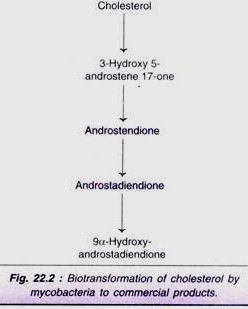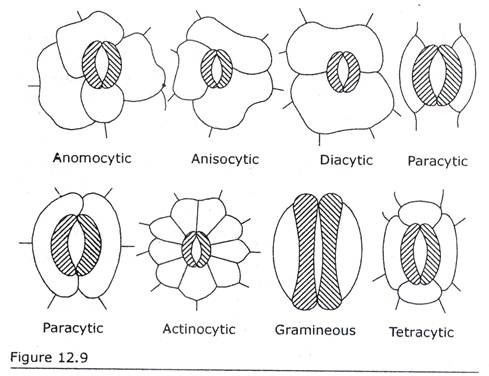Read this article to learn about 3 Methods of Measuring Dissolved Oxygen!
1. Chemical Method:
The determination of DO concentration in pure water or in waste water involves the addition of known excess quantities of a standard solution of reduced ion (such as ferrous or manganous), followed by a back titration of the excess with a known standard oxidizing agent.
Among these methods, Winkler’s method was widely used until the development of the DO probe. In principle, this method involves the formation of a precipitate of manganous hydroxide. This is oxidized to MnO(OH)2 by oxygen in the solution, which in turn oxidizes iodine. This liberated iodine is estimated by back titration with standard Na2S2O3 solution.
From these results, DO concentration in ppm can be determined using the following relation:
2. Physical Method:
This method makes use of the oxygen probe which measures DO concentration in the solution directly. The partial pressure of oxygen in a mixture of gases or in an aqueous liquid in dissolved form can be monitored by use of specially designed galvanic or amperometric electrodes or probes.
An oxygen electrode, in principle, is a device that produces an electric current which is proportional to the DO in the liquid medium in which the probe (electrode) is placed. Various types of DO electrodes are in use to determine DO concentration in fermentation broths and other biochemical reactions. On the basis of their operational characteristics, these oxygen electrodes may be classified as in Table 5.9.
Some of these electrodes are steam sterilizable, while many are not. The most popular oxygen electrodes used for the respiratory measurements and DO concentration measurements in microbial and medical engineering systems is membrane-covered electrodes. In determining DO concentration, the DO probe is placed in an electrical circuit which functions in the following most widely used way.
a. It imposes a potential difference between the oxygen electrode and some reference anode, which is usually a calomel half-cell or Silver-Silver chloride half-cell.
b. It measures the current passing through the electrode.
Typical examples of membrane-covered polarographic and galvanic type of DO probes are shown in the literature. Basically, the current output of the probe depends on the tension of oxygen that participates in the electrochemical reaction. It is obvious that the response time of the electrode depends on the membrane type and its thickness. It is determined by the time required for equilibrium.
Oxygen gradient will be established in the captive electrolyte film and the membrane following a change in oxygen level. The average 97.5% response time for a 1-mil Teflon membrane electrode is 10 s, which for a 1-mil polypropylene is closer to 40s. Table 5.9 provides the typical 97.5% response times obtained with several oxygen electrodes having membranes of differing composition and thickness.
Electrode output and response time as a function of cathode membrane and membrane thickness are given. It was shown earlier that the magnitude of the current produced by the electrode is directly proportional to the oxygen concentration, provided D remains constant.
The current produced when the electrode is exposed to oxygen is actually a function of the individual electrode and its functional state and environmental conditions (e.g., temperature, ionic strength of the liquid, etc.). Consequently, it is essential to calibrate the ammeter or recorder response by exposure to known concentrations of dissolved oxygen.
Two conventional reference concentrations of oxygen are selected to calibrate a DO electrode, since the current output by the electrode is usually linear with oxygen concentration. The most convenient oxygen concentrations to use are those of air-saturated solution and a solution with zero oxygen content. The former is easily prepared by the continuous gentle bubbling of air through the buffer in use at the desired working temperature.
Solutions with zero oxygen-content may be prepared by the following methods:
1. Dithionite method, which includes the following steps:
Span control of the amplifier/ recorder is adjusted to 95-100% of full-scale deflection for the electrode immersed in an air-saturated solution. Next, sodium dithionite solution prepared by injecting saturated solution of Na2S406 (freshly prepared, pH 7.5-8, in absence of oxygen) is added to the reaction liquid in 1: 30 v/v ratio, and a new value in the recorder is noted (usually 0-1% of the full-scale deflection).
It is due to a residual current output of the electrode in the absence of oxygen. The addition of more dithionite should produce no further change, and thus it is calibrated. The demerit of this method is that prolonged exposure to dithionite causes poisoning of the electrode. Therefore, the electrode must be removed from the dithionite solution immediately after the measurement.
2. Nitrogen discharging method:
In which a standard buffer solution is equilibrated with nitrogen by discharging the gas in it. Nitrogen discharge drives out any oxygen present in the buffer, leading to a buffer with zero oxygen content.
Therefore, by measuring the current output by placing the oxygen electrode into solutions of zero oxygen content and in solutions saturated with oxygen, respectively, a standard curve is plotted which gives the relation between current/voltage output of the electrode and DO concentration in the liquid.
By measuring the current/voltage output of the calibrated electrode in an unknown solution, its DO concentration can be known from this standard curve. After calibration, the probe is sterilized (if required) and is put into the bio-reaction liquid asceptically or gas mixture in which oxygen is to be measured.
In medical engineering, a probe that was used to monitor oxygen tension in anaesthetic circuits (modification of Meckereth electrode) utilizes a silver cathode, lead anode, and potassium hydroxide electrolyte. Oxygen used to be admitted to the electrode through a teflon membrane, which is pervious to gas, but not to the electrolyte. Oxygen is reduced at the cathode to form a hydroxyl ion in a reaction catalyzed by the silver.
These ions combine with lead at the anode to form lead hydroxide. The electron flow from the lead to the silver cathode through a micro-ammeter is a measure of the rate at which the reaction proceeds. Hence, the meter reading depends on the rate at which the external tension forces oxygen to diffuse through the membrane and contact the silver electrode.
These probes are rugged, operable in any position, unaffected by humidity, and self-contained (requiring no amplifier, pump, or heat source). They are compact— a probe of this type has been used by mounting it on the tip of a cardiac catheter for in vivo recording of blood oxygen tensions. Their readout can be made linear and accurate to within 5% of full scale.
The reading is not altered by the addition of compounds like halothane, methoxyflurane, or ether to an atmosphere of 20% oxygen and 80% helium. On the other hand, the probes are relatively expensive and short-lived. A commercial model, however, is warranted for 80,000 hours. At 21% oxygen, this would give a life expectancy of 80,000/21 = 3810 h, or approximately 23 weeks. Their response is slow, varying from one to several seconds. Carbon dioxide shows response time and in continuous exposure shortens probe life.
An oxygen probe employing a zirconium oxide galvanic electrode (similar to that described by Elliot and his associates) is commercially available. Its response time is so rapid (less than 100 ms) that the effect of pulsatile blood flows is detectable in the recording of oxygen tensions during a single expiration. C02 has no effect on the probe output, but the presence of gaseous anaesthetic agents causes gross inaccuracy. This monitor has a built-in heater, because the probe must be operated at 8.50°C. It also incorporates a vacuum pump and an amplifier.
3. Biological Method:
In this method, a highly selective flow system has been used by coupling immobilized whole bio-cells or enzymes with electrochemical sensors. In principle, two types of biosensors have been reported. The first type consists of enzyme or bio-cell electrodes in which immobilized whole bio-cell or enzyme is in direct contact with the potentiometric or amperometric sensor.
In the second type, the enzyme, or whole cell, immobilized on a solid support (bioreactor) is incorporated in the flow line into which the analyte is injected. The product generated is detected and measured with an electrochemical sensor downstream. A bio-electrochemical system with immobilized whole bio-cell or enzyme has been applied to flow injection analysis to monitor oxygen.
For glucose determination in flow systems, glucose oxidase has been frequently employed because of its high selectivity for (3-D-glucose, which is oxidized producing H2O2. The H2O2 produced enzymatically can be monitored electrochemically. As anoxic oxidation of the hydrogen peroxide is irreversible, calibration curves for glucose with glucose electrodes are shown in Table 5.10.

